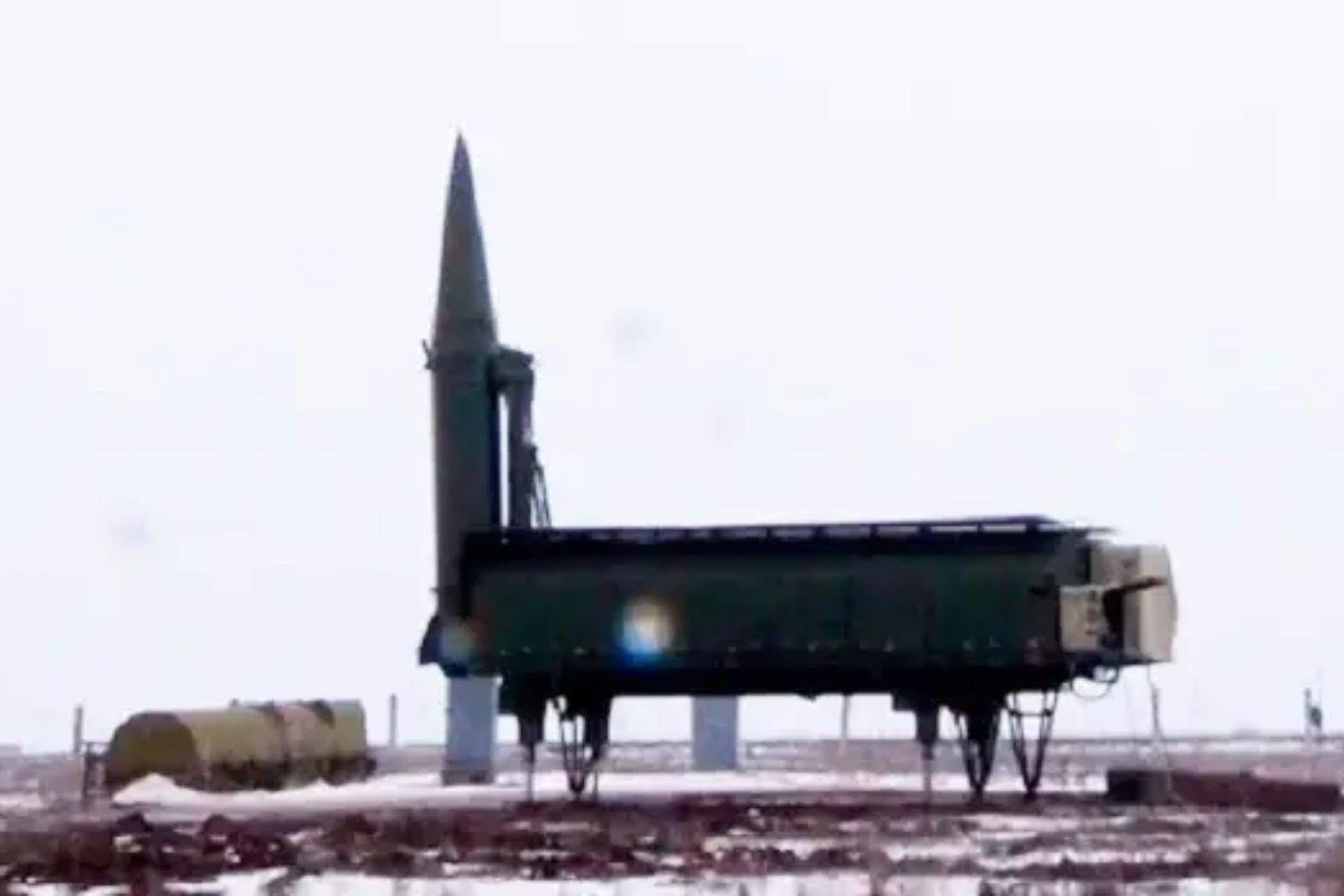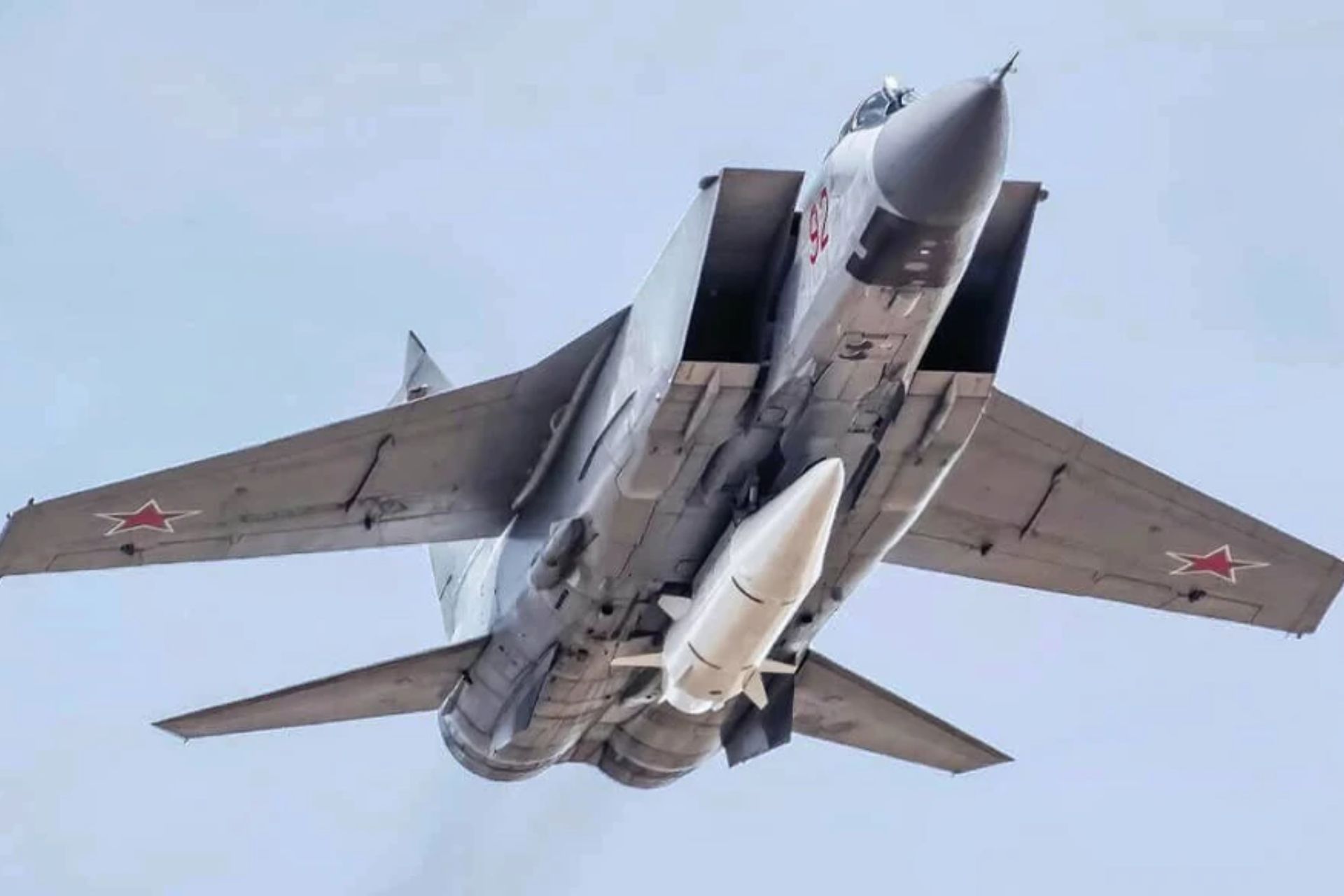Breaking News
FOCUS | Future Russian missiles: more range, more destruction, more dangerous for Europe..
Today, in the large-scale war being waged in Ukraine, one of the pillars of operations is missiles. On the Ukrainian side, these include the Storm Shadow, Scalp, or gliding bombs, while on the Russian side, the Iskander-M and Kinzhal missiles are the most used and most effective in terms of targets handled. However, intelligence from open sources allows us to show that Russia is developing new versions of these two types of weapons, intended to be more precise, more discreet, more enduring, in short, intended to be more effective and therefore more threatening to Europe. Let's take a brief look at the upcoming evolutions of these missiles.
Follow Army Recognition on Google News at this link

Mig-31K carrying kinzhal missile to be dropped on Ukrainian infrastructures (Picture source: Russian MoD)
From Iskander-M to Iskander-1000
Due to the provisions of the Intermediate-Range Nuclear Forces Treaty (INF Treaty), the flight range of the Iskander-M missiles was limited to a distance of 500 kilometers. This applied to both the quasi-ballistic missile 9M723 and the cruise missile R-500.
The Iskander-M OTRK has become the most important element of long-range strikes, allowing for the rapid destruction of high-priority targets identified by reconnaissance means and located behind enemy lines. These include enemy fighter jets and helicopters at air bases, HIMARS launchers, artillery systems, concentrations of armored vehicles, and manpower. When firing the quasi-ballistic missile 9M723, the Iskander-M has a significant advantage: the interval between missile launch and its approach to the target is too short for the enemy to react.
Of course, the longer range of the Iskander-M would allow it to reach targets deep within enemy territory, and given that Russia, following the United States, withdrew from the INF Treaty and that adherence to its restrictions no longer made sense, it is not surprising that a version is under development "Iskander-M," which, according to open sources, has been named OTRK "Iskander-1000". The flight range of the Iskander-1000 OTRK missile will be 1,000 to 1,300 kilometers, depending on the type of warhead, while the speed and altitude of its flight trajectory should be comparable to the parameters of the hypersonic missile 9-S-7760 Kinzhal.
According to open sources, an increase in the missile's range and speed was achieved through the use of a new, more energy-intensive fuel, while simultaneously increasing its volume by about 10 to 15% and reducing the mass of the warhead to 300 kilograms. A maximum range of 1,300 kilometers can be achieved for a warhead with an even smaller mass - about 200 kilograms; it can be assumed that this will be a special warhead (SCU). In the final stage of flight, the Iskander-1000 missile is expected to be capable of performing anti-air maneuvers with an overload of about 25 to 30 g. In addition, it can be assumed that the Iskander-1000 OTRK missile should be equipped with onboard self-defense means, particularly an electronic warfare (EW) complex, as well as dipole firing means and thermal traps.
The emergence of a new modification of the Iskander-M missile suggests that similar efforts to increase range are ongoing in the development of the Kinzhal hypersonic missile.

Test of Iskander-1000 OTRK -means Operativno-Takticheskiy Raketnyy Kompleks : operational-tactical
missile system- ( Picture source: Telegram channels)
"Kinzhal-M" and "Kinzhal-MD"
The Kinzhal hypersonic aviation complex, created based on the missiles of the Iskander-M OTRK, has two possible development paths.
The first involves reducing the size and weight of the Kinzhal complex missile to integrate this complex onto a larger number of tactical aircraft. The second involves maximizing the flight range of the Kinzhal missile complex, with the aim of ensuring the defeat of American medium-range missiles throughout Europe. The first traces of designations such as "Kinzhal-M" and "Kinzhal-MD" appeared in open sources in 2022. Two years later, a little more data is available, albeit still vague and incomplete.
Thus, the Kinzhal-M hypersonic aviation complex should be used from tactical aircraft; it will likely be integrated first on aircraft such as the Su-34, then on the Su-35S, Su-30SM, and possibly the Su-57. Presumably, by analogy with the Iskander-1000 OTRK missile, the warhead mass will be reduced to about 300 kilograms and means of protection against interception will be installed - electronic warfare equipment, as well as dipole firing means and thermal traps.
The exact information about the flight range of the Kinzhal complex missile is classified, but, according to data from open sources, taking into account the flight radius of the MiG-31K carrier, the range of the Kinzhal complex is 2,000 kilometers and taking into account the flight radius of the Tu-22M3 carrier - 3,000 kilometers. Some sources claim that the range of the Kinzhal complex is 2,000 kilometers without considering the radius of the aerial vector, but this is probably an exaggeration since, in this case, the MiG-31 carrier aircraft could be based deep within Russian territory to minimize the risks of destruction at air bases by long-range Ukrainian kamikaze drones. On this basis, it can be assumed that the range of the existing Kinzhal missile is about 1,000 kilometers, plus/minus a few hundred kilometers. At the same time, the range of the hypersonic Kinzhal-M missile will probably be about 500 to 700 kilometers.
As for the Kinzhal-MD complex, it may exist in two versions.
The first option is when the range increase occurs in the same way as implemented in the Iskander-1000 missile, using a new, more efficient fuel, while simultaneously increasing its volume by about 10 to 15% and reducing the warhead mass to 300 kilograms, without significant changes in the weight and size characteristics of the rocket. In this case, the flight range of the hypersonic missile of the Kinzhal-D complex can be about 1,500 kilometers without taking into account the radius of the carrier; this version of the Kinzhal-MD will be used from the existing MiG-31K carriers.
The second option involves increasing the dimensions and weight of the Kinzhal-MD complex missile, taking into account the limitations imposed by carriers such as the Tu-22M3 and potentially the Tu-160M, the current launch platform the Mig-31K will no longer be able to carry this missile.
In particular, the existing missile of the Kinzhal complex has a mass of 4.3 tons, a length of 7.2 meters, and a diameter of 1.2 meters, while the X-22 missile used by the long-range bomber Tu-22M3 has a mass of 5.78 tons, a length of 11.67 meters, a diameter of 0.92 meters, and a height with a folded keel of 1.8 meters. If the strategic bomber Tu-160M is considered as a carrier, the maximum length of the missile will be limited by the length of the bay, which is 11.2 meters.
Thus, for the Tu-22M3 and Tu-160M aircraft, the advanced Kinzhal-MD missile could well increase by nearly 4 meters in length and 1.5 tons in weight. It is unlikely to be advisable to increase the length of the rocket itself; it may rather be equipped with an additional solid fuel booster stage - a booster. As a result, the Kinzhal-MD complex will represent the second stage - the Kinzhal-M complex rocket, complemented by the first stage - a booster, which will ensure maximum unification of the Kinzhal-M and Kinzhal-MD complexes.
A two-stage missile of the Kinzhal-MD complex in this configuration may have a flight range of about 2,000 to 2,500 kilometers without taking into account the radius of the carrier, which entirely covers the territory of continental Europe and Great Britain, when launching missiles from the Kinzhal-MD complex from Russian airspace.

Mig-31K carrying Kh-47M2 Kinzhal missile (Picture source: Russian MoD)
Conclusions : range as a threat for NATO
The appearance of the Iskander-1000 will pose a serious threat to F-16 fighters stationed at air bases deep within Ukrainian territory, provided these technological innovations are integrated into the armies quickly. From the Russian perspective, the American satellite networks HBTSS and PWSA will not be able to recognize whether a conventional Iskander-M missile launch or an extended-range Iskander-1000 missile launch is underway, which will force a reaction. and this at all launches of missiles from the Iskander family. This will lead to increased fatigue of flying personnel and technical staff, wear and tear of equipment, and additional unmasking of aircraft deployment sites.
The Kinzhal-M missile, along with the Iskander-M, will become the main equipment used for deep strikes on enemy aircraft and helicopters located at air bases, HIMARS launchers, artillery systems, accumulations of armored vehicles.
As for the Kinzhal-MD, it is thought of as the main threat to medium-range ballistic and cruise missiles mounted on fixed or slightly mobile batteries, positioned farthest from the front line


























